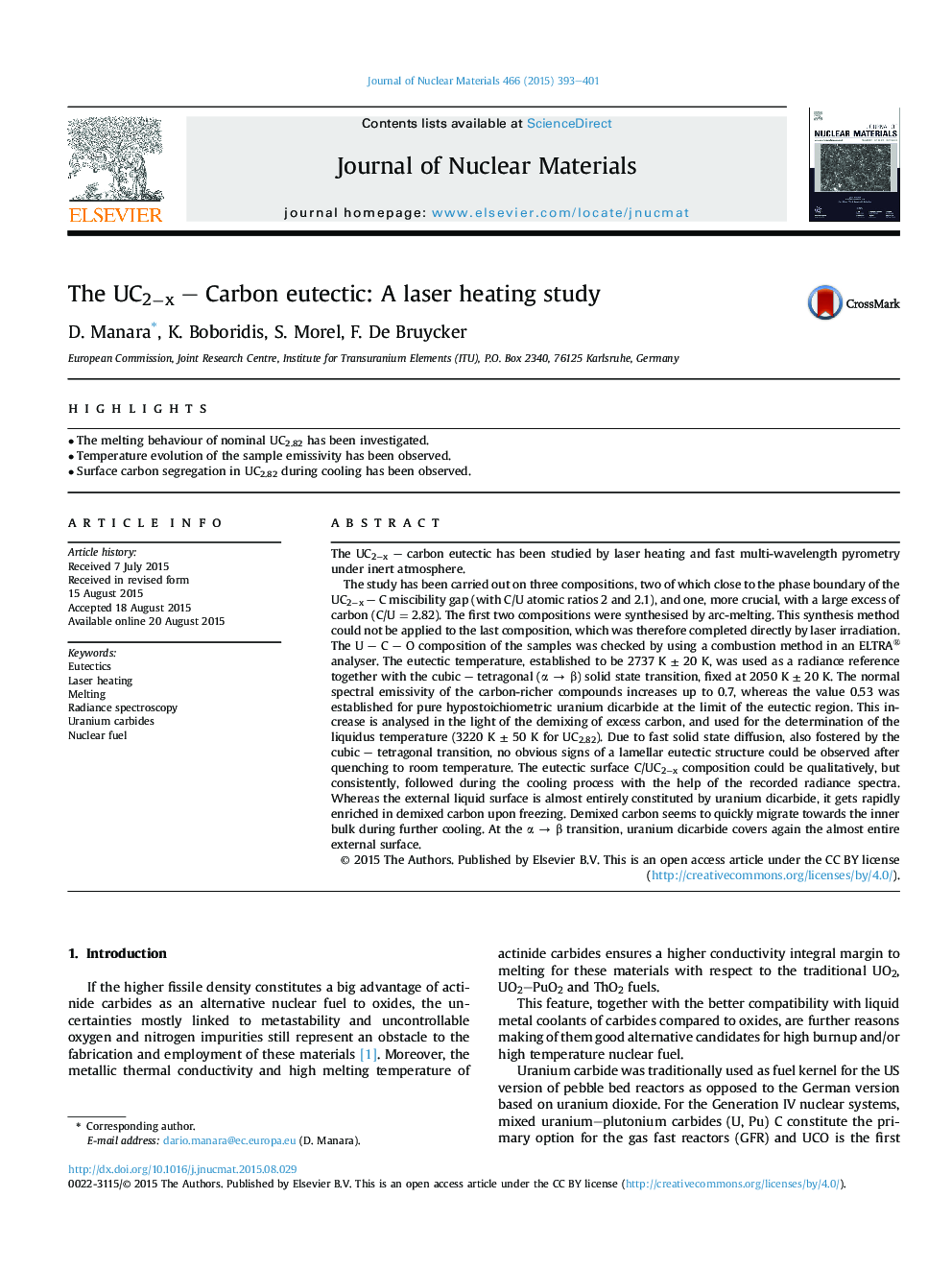| Article ID | Journal | Published Year | Pages | File Type |
|---|---|---|---|---|
| 7964931 | Journal of Nuclear Materials | 2015 | 9 Pages |
Abstract
The study has been carried out on three compositions, two of which close to the phase boundary of the UC2âx - C miscibility gap (with C/U atomic ratios 2 and 2.1), and one, more crucial, with a large excess of carbon (C/U = 2.82). The first two compositions were synthesised by arc-melting. This synthesis method could not be applied to the last composition, which was therefore completed directly by laser irradiation. The U - C - O composition of the samples was checked by using a combustion method in an ELTRA® analyser. The eutectic temperature, established to be 2737 K ± 20 K, was used as a radiance reference together with the cubic - tetragonal (α â β) solid state transition, fixed at 2050 K ± 20 K. The normal spectral emissivity of the carbon-richer compounds increases up to 0.7, whereas the value 0.53 was established for pure hypostoichiometric uranium dicarbide at the limit of the eutectic region. This increase is analysed in the light of the demixing of excess carbon, and used for the determination of the liquidus temperature (3220 K ± 50 K for UC2.82). Due to fast solid state diffusion, also fostered by the cubic - tetragonal transition, no obvious signs of a lamellar eutectic structure could be observed after quenching to room temperature. The eutectic surface C/UC2âx composition could be qualitatively, but consistently, followed during the cooling process with the help of the recorded radiance spectra. Whereas the external liquid surface is almost entirely constituted by uranium dicarbide, it gets rapidly enriched in demixed carbon upon freezing. Demixed carbon seems to quickly migrate towards the inner bulk during further cooling. At the α â β transition, uranium dicarbide covers again the almost entire external surface.
Related Topics
Physical Sciences and Engineering
Energy
Nuclear Energy and Engineering
Authors
D. Manara, K. Boboridis, S. Morel, F. De Bruycker,
